Minds On
Compare and contrast
Compare and contrast the following two images.
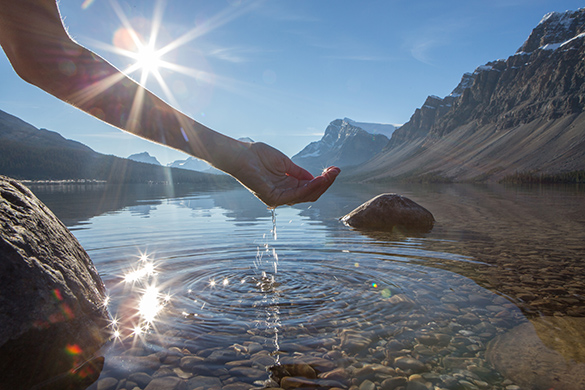
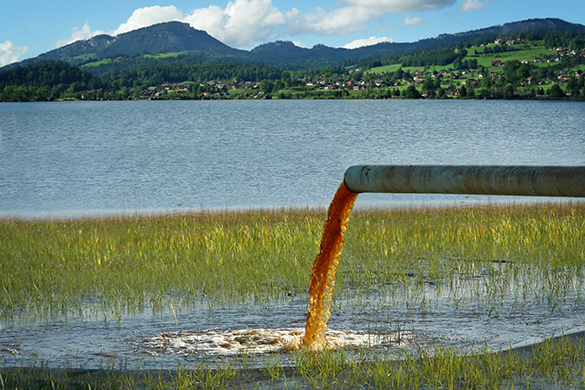
Brainstorm
Brainstorm
What similarities do you notice in the images? What differences do you notice? If you had to choose between these two images as to which water you think would be safe for drinking, which would you choose? Why?
What do you think could be the possible effect of drinking from one of these lakes?
What causes water pollution? How can water be cleaned for human use?
Brainstorm ideas orally, digitally, in print, or in another method of your choice.
Action
Pollutant sources and effects
Pollutants in our waterways impact not only humans but also the animals and plants that depend on that water. Pollution can affect the food supply or food chain and is the major source of humans being exposed to chemicals or toxins.
Match the pollutant sources and effects below. Note that these are not the only sources of these pollutants; they are just one example.
For each Pollutant Source, select the corresponding Effect. You can play more than once.
Pollutants and access to water
Press ‘Pollutant’ to access the definition of pollutant.
What is a pollutant? A pollutant is waste or a substance that may harm the environment (humans, plants, and animals).
Water pollutants are introduced into our watershed in many ways. As runoff water from rainfall or melting snow travels through our watershed it picks up natural and human-made substances along the way. Harmful waste and substances, such as domestic and chemical waste, and natural waste and substances, such as sediments and organic debris, are then introduced into lakes, rivers, wetlands, and oceans. Water pollutants negatively impact ecosystems and human health.
Global connection
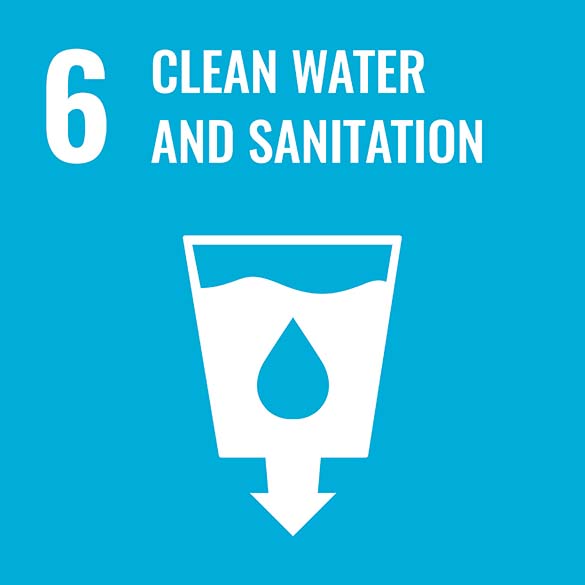
The United Nations (UN) is a group of many countries from around the world that have come together to create a better future for people and the environment. They have created 17 goals called the Sustainable Development Goals.
This learning activity is connected to Goal #6: Clean Water and Sanitation. This means everyone should have Safe drinking water and sanitation. Having clean water affects not only health but things like reducing poverty, having food security, and having a sustainable ecosystem.
Sustainable Development Goal 6 focuses on clean drinking water, sanitation, and hygiene. It also addresses the quality and sustainability of water resources. By 2030, the Sustainable Development Goal 6 aims to improve water quality by reducing pollution and minimizing the release of hazardous chemicals and materials that enter water systems. Sustainable management of water resources will allow for the reduction of pollutants entering the water systems. This will have a positive impact on society and the environment in many ways. Safe water and sanitation are essential for health, ecosystems and the survival of people and the planet. Since humans require clean water to be healthy, the increase in the quality and sustainability of water resources will also have a lasting positive impact on economic growth, productivity, and education.
Water treatment process
There are four main steps involved in the water treatment process, as seen in the following diagram.

A diagram of the water treatment process. The process begins with water in a lake or river. A water intake pipe and water pump bring water to a coagulation tank. Arrows show coagulants being added to the tank and mixing with the water. An arrow leads to the sedimentation tank, which has a sloping bottom and is connected to the coagulation tank by a pipe. Sediment collects in the bottom of the sedimentation tank and exits through a drain pipe. A pipe leads from the sedimentation tank to the filtration tank, which has four filters inside it. Another pipe leads from the sedimentation tank to the filtration tank. An arrow goes from the filtration tank, past a disinfection tank, past a storage tank, and ends at an image of a house, labeled “distribution.” Above the disinfection tank is an illustration of viruses and bacteria, each with a letter X beside them. Inside the tank are two arrows showing the direction of water flow. The disinfection tank is connected to the storage tank by a pipe. The storage tank is a large above-ground structure on pylons. Another pipe leads from the storage tank to the house. Inside the house, there is a toilet, a sink, and a mirror.
- Coagulation – In this step, the water is mixed with chemical coagulants to allow bacteria, mud and other impurities to stick to the chemicals and settle at the bottom
- Sedimentation – Then, water travels through a tank and the clumps of dirt fall to the bottom of the tank.
- Filtration – After, water is passed through a material that catches the smallest pieces of dirt while allowing the rest of the water to pass through.
- Disinfection – Lastly, you need to remove the harmful stuff that isn’t visible, like germs. Chlorine and other chemicals are added to kill remaining viruses and bacteria.
Water distribution
Once drinking water is treated, the water flows to a pumping station where it is pumped through large water mains to homes, business, and schools. Have you ever wondered who is running these facilities? You are about to find out!
Connections
Career connections: Water treatment and distribution operators
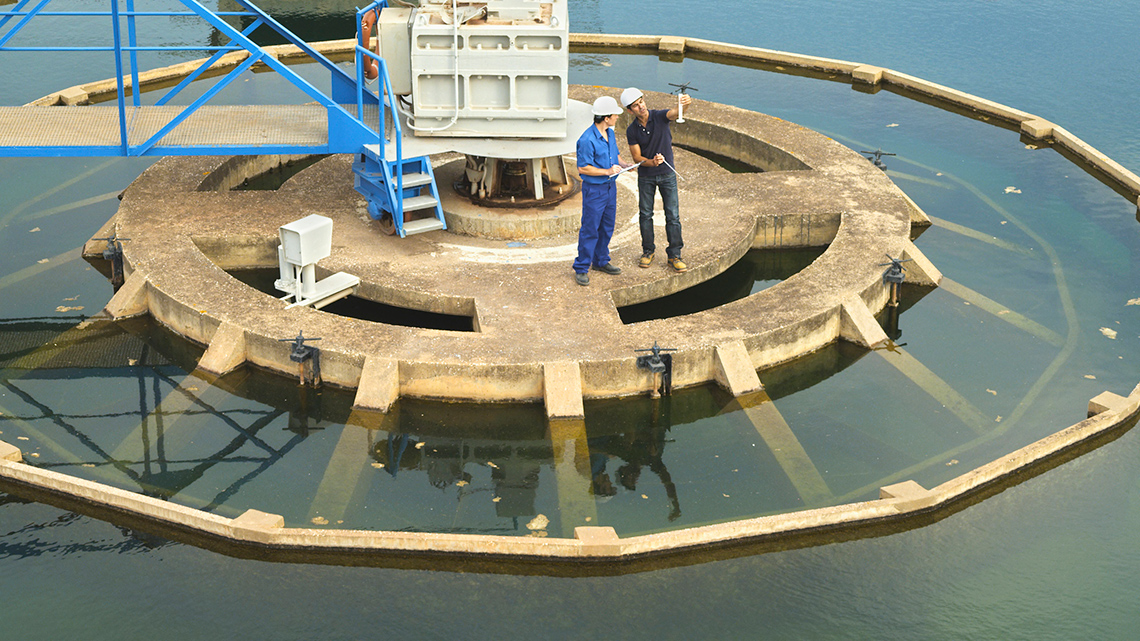
Water Treatment and Distribution Operators maintain systems of pipes and pumps that carry drinking water to the community. They are responsible for monitoring water quality and play an important role in protecting public health. Their day-to-day responsibilities include monitoring equipment, collecting water samples, and evaluating treatment process to make sure everything is functioning properly. They make sure the filters and clarifier basins are emptied and changed when needed. Many waters treatment and distribution operators have additional training in repairing mechanical and electrical equipment.
Water treatment case studies
Press the following tabs to learn about innovative and unique ways to treat water around the world.
Communities are now discovering the value that wetlands can play against storm surges and pollution. In California, they are using artificial wetlands as a sewage-treatment facility.
Wastewater is pumped into a series of wetlands where bacteria and plants cleanse the polluted water. These areas also provide a habitat for wildlife and educational opportunities.
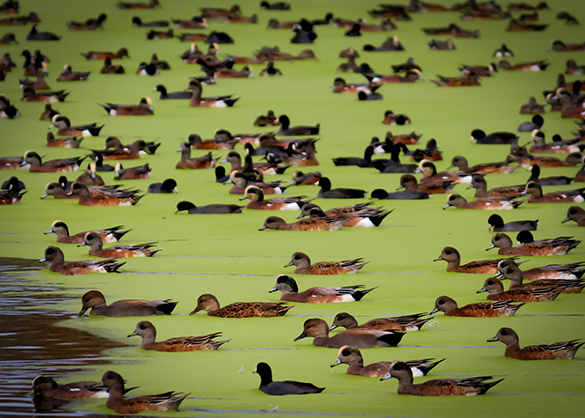
In Bangladesh, there is a population of 164.7 million. Due to its high density, the lake and river water is polluted with feces that carries a lot of germs. These germs can cause infectious diseases in humans.
In an effort to find an easier and cheaper way to provide clean water, an engineer used a 3D printer to create a device that would attach to the water pumps in Bangladesh and adds chlorine to water to disinfect it. Using the 3D printer made it possible to make more of these devices all over the world to provide clean and safe drinking water for all.
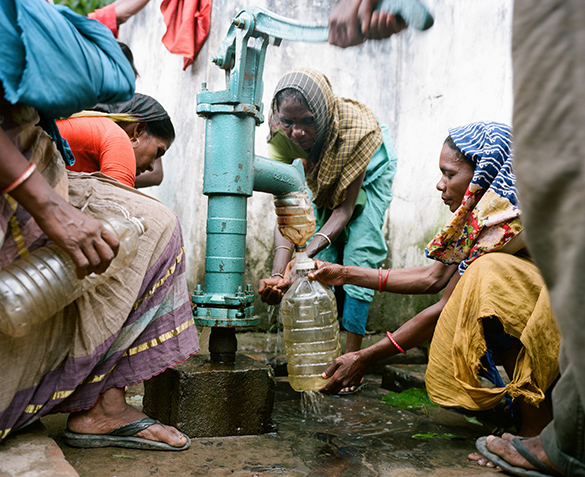
Let’s build a water filtration device!
Now it’s time to put everything you’ve learned into practice! Your task is to design, and if possible, build a water filtration device that will remove as much dirt, sediment, and contaminants as possible from water samples.
Explore this video to learn about the steps of the Engineering Design Process.
Safety
Before you explore the following experiment, let’s perform a safety check.
Before you begin, you will need to collect or make various water samples. Some of your water samples should contain dirt, rocks, grass, etc. to simulate “dirty water.”
Review the water treatment process in the Action section and the multiple steps involved in water treatment. Use this information when designing your device. Consider that your device may need to have more than one stage that the water passes through.
Some household materials you may wish to use are as follows, but know that you are not limited to only these materials:
- plastic, paper or styrofoam cups
- straws
- cardboard
- cotton balls
- aluminum foil
- rubber bands
- tape or glue
- toothpicks
- paper towel
- plastic wrap
- flour
- coffee filters
- towel or paper towel
- mesh
Safety reminder!
Note: DO NOT drink the water, even after you’ve filtered it with your device.
Observation checklist
I can generate many potential solutions by:
Begin by completing the first few components of the Engineering and Design Process: Ask, Think, Plan. Access the following fillable and printable document Engineering and Design Process or record your ideas in another method of your choice.
Ask! |
What is the problem you are trying to solve? |
Think! |
What are some possible solutions? Brainstorm your ideas here. |
Plan! |
Plan a design and create a drawing that includes all materials you may need. How will you measure the success of your device? |
Press the ‘Activity’ button to access Engineering and Design Process.
Consolidation
Task 1: Check your understanding!
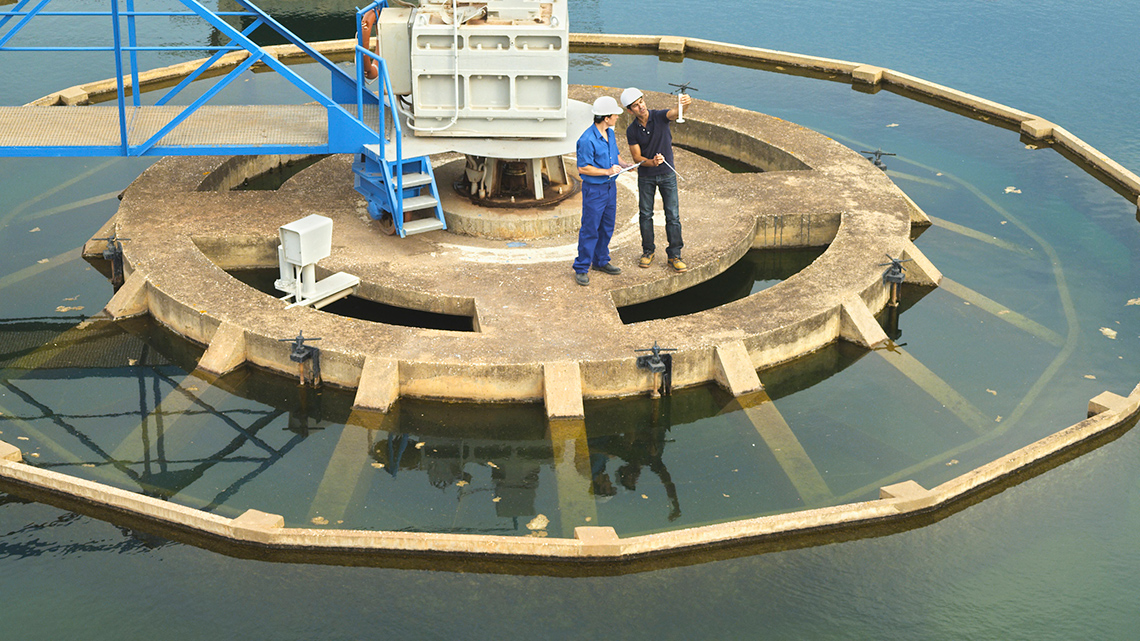
Are you ready to check your understanding? Complete the following true or false questions.
Select the correct answer, then press ‘Check Answer’ to see how you did.
Task 2: Presenting my water filtration device
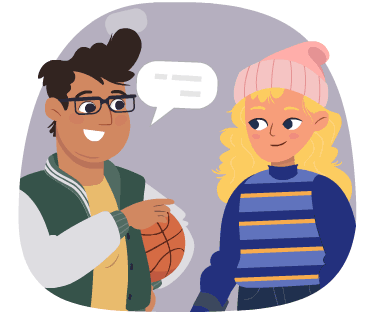
Imagine you have been asked to present your water filtration device to a company that wants to build it. Create a presentation using a method of your choice to share with a company about your filtration device. Your presentation should include an image or diagram of the device, an explanation of how it filters water, pros and cons of the device, and materials needed to make the device.
Presentation checklist
For my presentation…
Reflection
As you read the following descriptions, select the one that best describes your current understanding of the learning in this activity. Press the corresponding button once you have made your choice.
I feel…
Now, expand on your ideas by recording your thoughts using a voice recorder, speech-to-text, or writing tool.
When you review your notes on this learning activity later, reflect on whether you would select a different description based on your further review of the material in this learning activity.